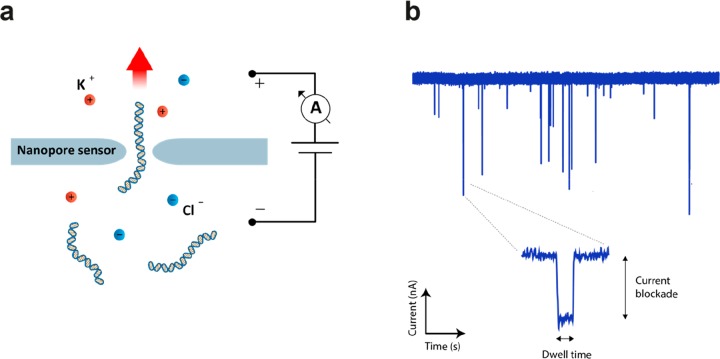Figure 1.
Fundamental principle of nanopore sensing. (a) A nanopore separates two aqueous compartments filled with electrolyte solution (e.g., potassium chloride), and small molecules (e.g., DNA) are electrokinetically pulled through the pore by an applied potential. (b) While passing through the nanopore, the molecule temporarily induces a partial current blockade which is detected by an amplifier. The signature of a single-molecule translocation event is generally characterized by the amplitude of the current blockade, which is proportional to the volume of the molecule in the nanopore, and by the dwell time, which depends on the electrophoretic driving force and transient interactions between the passing molecule and the pore surface.

